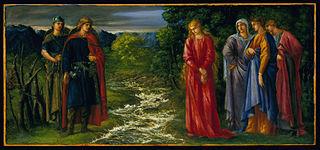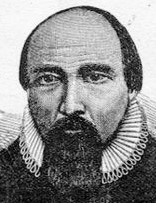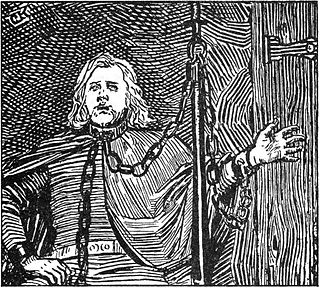 W
WBankastræti núll is a collection of twenty-five essays about the 2008–11 Icelandic financial crisis by Einar Már Guðmundsson. It takes its name from the euphemistic name of old public toilets at the end of Bankastræti in Reykjavík, which Einar Már presents as a metaphor for the banking sector generally.
 W
WBrevis commentarius de Islandia is a book in Latin written and published in Denmark in 1593 by the Icelandic scholar Arngrímur Jónsson. It is a "Defense of Iceland", in which he criticized the works of numerous authors who had written about the people and the country of Iceland. His main target was a poem by Gories Peerse, a merchant who had written an entertaining and somewhat slanderous poem about Icelandic geography and ethnography. Arngrímur also criticized substantial works such as Cosmographia universalis of the German scholar Sebastian Münster.
 W
WIn prosody, alliterative verse is a form of verse that uses alliteration as the principal ornamental device to help indicate the underlying metrical structure, as opposed to other devices such as rhyme. The most commonly studied traditions of alliterative verse are those found in the oldest literature of the Germanic languages, where scholars use the term 'alliterative poetry' rather broadly to indicate a tradition which not only shares alliteration as its primary ornament but also certain metrical characteristics. The Old English epic Beowulf, as well as most other Old English poetry, the Old High German Muspilli, the Old Saxon Heliand, the Old Norse Poetic Edda, and many Middle English poems such as Piers Plowman, Sir Gawain and the Green Knight, and the Alliterative Morte Arthur all use alliterative verse.
 W
WÄttestupa is a name given to a number of precipices in Sweden, Norway and Iceland.
 W
WIceland is a Nordic island country in the North Atlantic Ocean and the most sparsely populated country in Europe. The capital and largest city is Reykjavík. Reykjavík and the surrounding areas in the southwest of the country are home to over two-thirds of the population. Iceland is the only part of the Mid-Atlantic Ridge that rises above sea-level, and its central volcanic plateau is erupting almost constantly. The interior consists of a plateau characterised by sand and lava fields, mountains, and glaciers, and many glacial rivers flow to the sea through the lowlands. Iceland is warmed by the Gulf Stream and has a temperate climate, despite a high latitude just outside the Arctic Circle. Its high latitude and marine influence keep summers chilly, and most of its islands have a polar climate.
 W
WCrymogæa in is a book in Latin written by the Icelandic scholar Arngrímur Jónsson and published in Hamburg in 1609 and again in 1610. It was the first historical description of Iceland since Íslendingabók and the first comprehensive book about the history of Iceland.
 W
WMS NKS 1867 4° is a 1760 paper manuscript now in the Danish Royal Library, Copenhagen, containing skaldic poetry, assorted runological information, the prose Edda and the poetic Edda:Sólarljóð Samtak um rúnir, Björn Jónsson á Skarðsá
 W
WGunnlaugs saga ormstungu or the Saga of Gunnlaugur Serpent-Tongue is one of the Icelanders' sagas. Composed at the end of the 13th century, it is preserved complete in a slightly younger manuscript. It contains 25 verses of skaldic poetry attributed to the main characters.
 W
WThe Jómsvíkinga saga (Saga of the Jomsvikings) is a medieval Icelandic saga composed by an anonymous Icelander. The Saga was composed in Iceland during the 13th century. It exists in several manuscripts which vary from each other. There are many different versions and translations of the saga.
 W
WJPV was an Icelandic publishing house, established in 2001 by Jóhann Páll Valdimarsson, from whose initials the press takes its name. On 1 October 2007, JPV merged with the publishers Mál og menning, Vaka-Helgafell and Bókaútgáfan Iðunn under the name Forlagið. However, books continue to be published under the JPV imprint.
 W
WLand tækifæranna is a 2008 crime fiction novel by Ævar Örn Jósepsson. The backdrop for the events was the 2008 Icelandic financial crisis, with Ævar Örn rewriting parts of the novel just before publication to respond to the unfolding political situation in Iceland. It won the Blóðdropinn award and was thus nominated for the Glass Key Award. Published in Reykjavik by Uppheimar, 2008, ISBN 9979659165. It is the author's fifth crime novel with the same characters, and received positive reviews. In the assessment of Katrín Jakobsdóttir;The community divide suits Ævar well and he is on great form in this book, creating a nice plot around the murdered Pole and the financier (útrásarvíkingur), and clearly enjoys putting words into the mouths of his characters when he constructs dialogues about the situation. Land of Opportunities thus testifies well to what good effects he has achieved in the form, and at the same time he has distinguished himself with a sharp social commentary and well established subject matter.
 W
WMál og menning is an Icelandic publishing house, established in 1937. The press has published the work of many of Iceland's best known authors, among them Þórbergur Þórðarson, Jóhannes úr Kötlum, Svava Jakobsdóttir, Þórarinn Eldjárn, and Einar Kárason.
 W
WThe North Icelandic Benedictine School is a fourteenth-century Icelandic literary movement, the lives, activities, and relationships of whose members are attested particularly by Laurentius saga biskups. This movement is characterised by an elaborate rhetorical style new to Icelandic saga-writing at the time, with Latinate grammar, Latin and Low German loan-words; and, unusually for Icelandic sagas, which are usually anonymous, a close-knit network of identifiable authors. The school is associated particularly with the Northern Icelandic Benedictine monasteries of Þingeyri and Munkaþverá in the diocese of Hólar, and with the students of Jón Halldórsson and Lárentíus Kálfsson.
 W
WOddur Gottskálksson's New Testament is a translation of the New Testament into Icelandic. It is the oldest preserved book printed in the Icelandic language.
 W
WThe Passíusálmar or Passion Hymns are a collection of 50 poetic texts written by the Icelandic minister and poet, Hallgrímur Pétursson. The texts explore the Passion narrative, as traditionally presented, from the point where Christ enters the Garden of Gethsemane to his death and burial. Hallgrímur began composing the work in 1656, while serving as pastor of Saurbær in Hvalfjörður. It took him three years to complete, the final poem being written in May 1659; the first edition was published seven years later, in 1666. By the end of the century they had become so popular in Iceland that five editions had been published. Since that time, they have been reprinted more than 75 times, a unique achievement in Icelandic literature. The poems were translated into many other languages, including Latin, English, Chinese and Danish.
 W
WThe Poetic Edda is the modern name for an untitled collection of Old Norse anonymous poems, which is distinct from the Prose Edda written by Snorri Sturluson. Several versions exist, all primarily of text from the Icelandic medieval manuscript known as the Codex Regius, which contains 31 poems. The Codex Regius is arguably the most important extant source on Norse mythology and Germanic heroic legends. From the early-19th century onwards it has had a powerful influence on later Scandinavian literatures - not only through its stories, but also through the visionary force and the dramatic quality of many of the poems. It has also become an inspiring model for many later innovations in poetic meter, particularly in Nordic languages, offering many varied examples of terse, stress-based metrical schemes that lack any final rhyme but instead use alliterative devices and strongly-concentrated imagery. Poets who have acknowledged their debt to the Codex Regius include Vilhelm Ekelund, August Strindberg, J. R. R. Tolkien, Ezra Pound, Jorge Luis Borges, and Karin Boye.
 W
WThe Prose Edda, also known as the Younger Edda, Snorri's Edda or, historically, simply as Edda, is an Old Norse textbook written in Iceland during the early 13th century. The work is often assumed to have been to some extent written, or at least compiled, by the Icelandic scholar, lawspeaker, and historian Snorri Sturluson c. 1220. It is considered the fullest and most detailed source for modern knowledge of Norse mythology, the body of myths of the North Germanic peoples, and draws from a wide variety of sources, including versions of poems that survive into today in a collection known as the Poetic Edda.
 W
WThe sagas of Icelanders, also known as family sagas, are one genre of Icelandic sagas. They are prose narratives mostly based on historical events that mostly took place in Iceland in the ninth, tenth, and early eleventh centuries, during the so-called Saga Age. They were written in Old Icelandic, a western dialect of Old Norse. They are the best-known specimens of Icelandic literature.
 W
WA Skald, or skáld, is one of the often named poets who composed skaldic poetry, one of the two kinds of Old Norse poetry, the other being Eddic poetry, which is anonymous. Skaldic poems were traditionally composed on one occasion, sometimes extempore, and include both extended works and single verses (lausavísur). They are characteristically more ornate in form and diction than eddic poems, employing many kennings and heiti, more interlacing of sentence elements, and the complex dróttkvætt metre.
 W
WÞiðreks saga af Bern is an Old Norse chivalric saga centering the character it calls Þiðrekr af Bern, who originated as the historical king Theoderic the Great (454–526), but who attracted a great many unhistorical Germanic heroic legends. The text is probably by a Norwegian scholar from the 1200s who translated a lost Low German prose narrative of Theoderic's life, or who compiled it from various German sources, or by an Icelandic scholar from the 1300s. It is a pre-eminent source for a wide range of medieval Germanic legends.